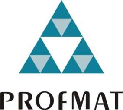Banca de DEFESA: FRANCIRLEY MOURA PORTO
Uma banca de DEFESA de MESTRADO foi cadastrada pelo programa.DISCENTE : FRANCIRLEY MOURA PORTO
DATA : 01/07/2019
HORA: 08:30
LOCAL: Sala H104 (a confirmar)
TÍTULO:
A didactic engineering for the teaching of operations with fractions and notable products
PALAVRAS-CHAVES:
Didactic Engineering. Didactic Sequences. Theory of Didactic Situations. Operations with fractions. Notable products.
PÁGINAS: 106
GRANDE ÁREA: Ciências Humanas
ÁREA: Educação
SUBÁREA: Ensino-Aprendizagem
ESPECIALIDADE: Métodos e Técnicas de Ensino
RESUMO:
This research aims at the elaboration, application and analysis of two didactic sequences, one for the approach of operations with fractions associated with figural representation, and the other for notable products related to the rectangle areas. Such research is classified as field research regarding data collection, and as descriptive when addressing its objectives. The hypothesis of the research is that the application of didactic sequences facilitates the learning of the contents addressed. The methodology used was Didactic Engineering, which allowed us to validate the activities internally, and for the elaboration and analysis of the didactic sequences the Theory of Didactic Situations was used. The subjects of the research were students of the sixth and eighth years of two classes of elementary school in a public school in Juruti-PA. The data were collected through the production of the students and the observations made during the course of the application of the didactic sequences, besides the application of a questionnaire in a complementary way. In the sixth grade class there was a better performance in addition, subtraction and multiplication of fractions. The greatest difficulty was in the items related to the division operation. In the eighth year the insertion of fractions in some items of the activities negatively influenced the percentage of correct answers. The students demonstrated difficulties in the items pertinent to the production of some text, without this necessarily being related to their understanding of the concept approached. The application of the didactic sequences provided the structuring of didactic situations that presented the potential to allow its reapplication.
MEMBROS DA BANCA:
Presidente - 1700287 - RODRIGO MEDEIROS DOS SANTOS
Interno - 1432784 - JOSE RICARDO E SOUZA MAFRA
Externo ao Programa - 324704 - EDILAN DE SANT ANA QUARESMA




